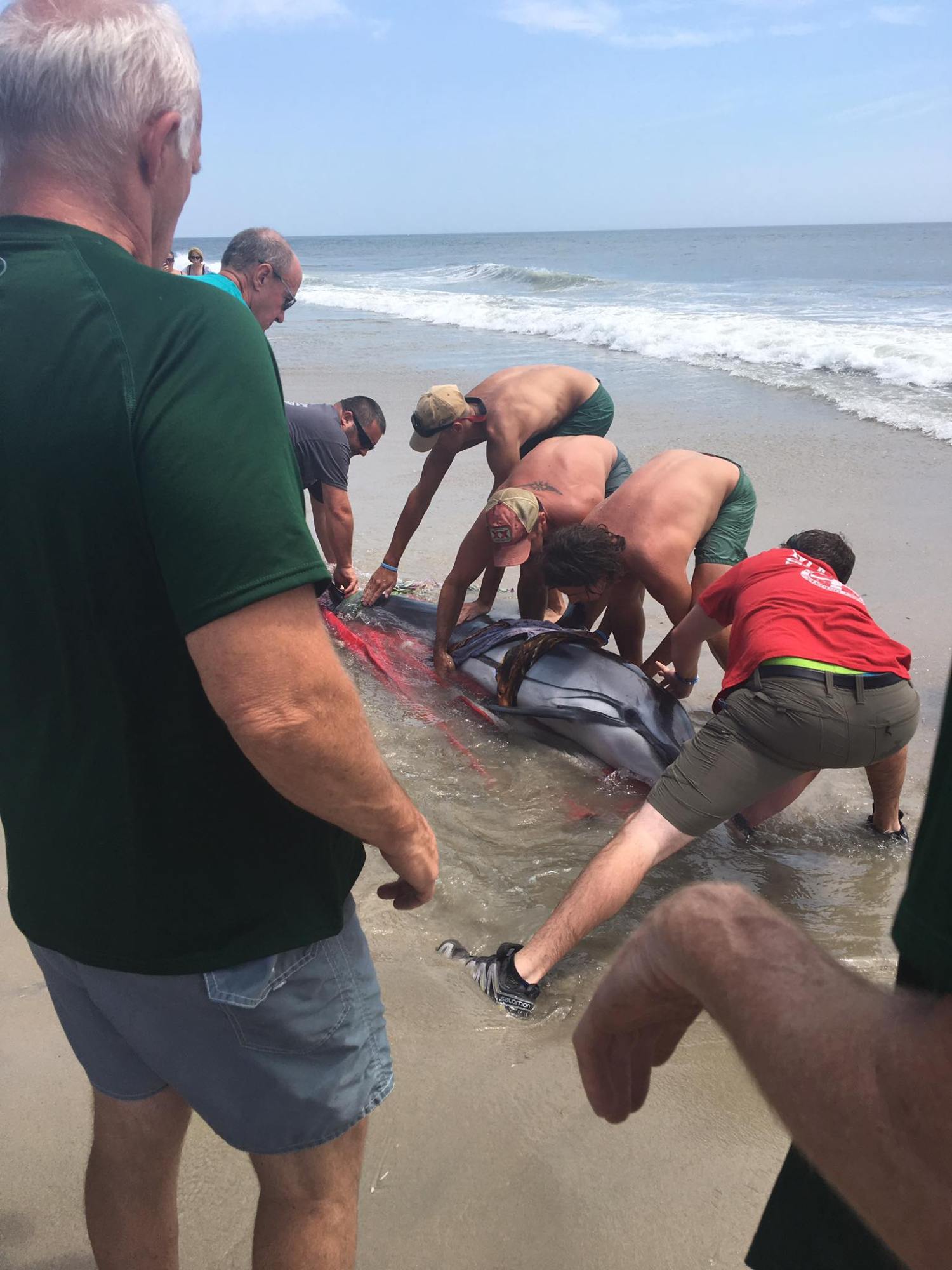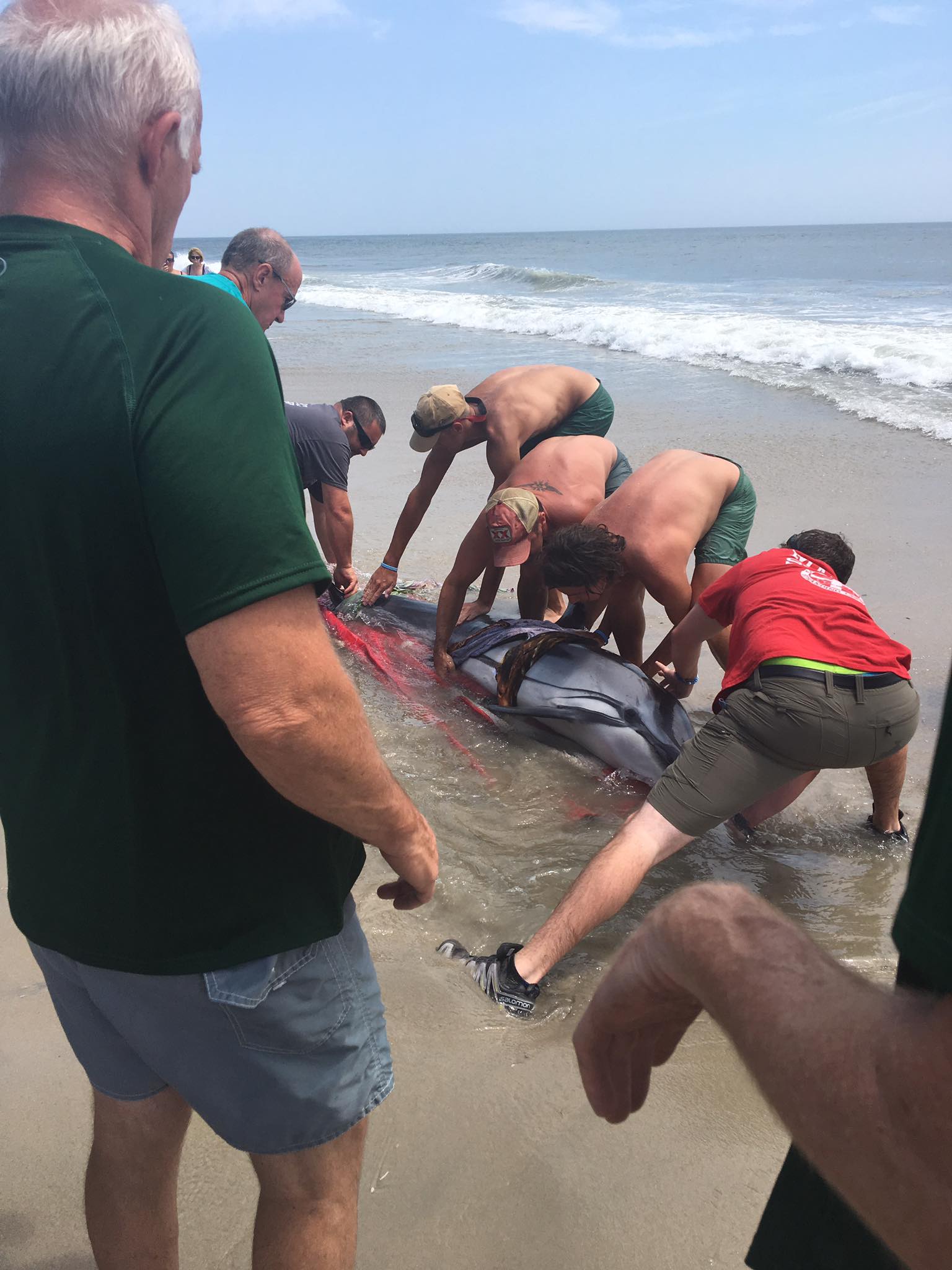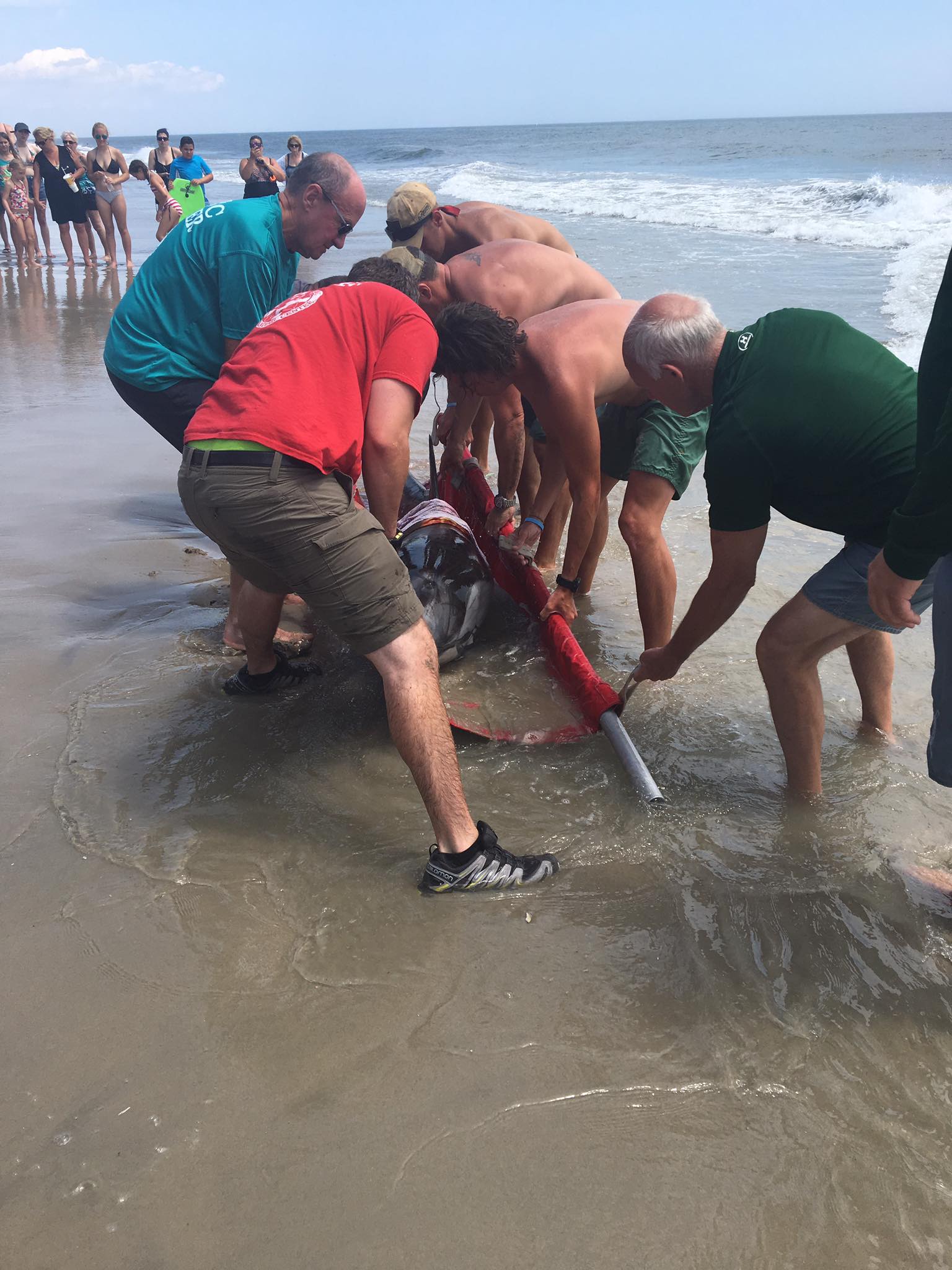Sea Isle City Dolphin Stranding On Wednesday, July 12 2017

On Wednesday, July 12, 2017 there was a stranding of a spotted dolphin on the 49th street beach in Sea Isle City, New Jersey. The dolphin was reported to be seen in the surf around 11:22 am and beached itself not shortly thereafter. Initial observations suggested the dolphin was sick and was trying to beach itself. There was also visual bleeding lacerations to the skin of the dolphin most likely from either a boat strike or from rolling in the sand. Sea Isle Beach Patrol on duty quickly responded to the beaching, cooling the dolphin off with wet towels and buckets of cool water until the Marine Mammal Stranding Center arrived on scene. The dolphin died a bit later and the Marine Mammal Stranding Center is awaiting the results of the necropsy.

SEA ISLE CITY BEACH PATROL/FACEBOOK.
The initial interesting point of this case is the species of dolphin that washed ashore. Instead of the usual bottlenose dolphin seen swimming in the surf all along the Jersey Shore, the species that washed ashore was a spotted dolphin. The Atlantic Spotted Dolphin is seen generally offshore along the waters of the continental shelf. Consequently, this individual spotted dolphin being so close to shore suggests it may have been very ill.
This leads into the next very interesting point as to what could cause such expert marine navigators and swimmers to beach themselves. There are many different factors that can go into a singular stranding, but many scientist attribute most strandings seen today to shipping noise, marine sonar, pollution, shark attacks, and illness. This being said, only about fifty percent of all stranding cases worldwide have a determined cause. In the Sea Isle case this past week, the assumption of illness is the most probable cause. The most common illness for dolphins in the United States is dolphin morbillivirus (DMV). This virus can have detrimental side effects including: skin lesions, pneumonia, brain infection, and secondary or latent infections. All of this can disorient the dolphin, cause it to beach itself.
All in all, marine mammal strandings do occur all along the Jersey Shore for a variety of different reasons. If a stranding occurs at your beach, it is important to call the Marine Mammal Stranding Center (609-266-0538) immediately. Also remember not to touch or try and move the animals until a professional trained in marine mammal strandings in there.

SEA ISLE CITY BEACH PATROL/FACEBOOK.
-Rachel Sandquist, University of Miami
Intern at Cape May Whale Watch and Research Center
